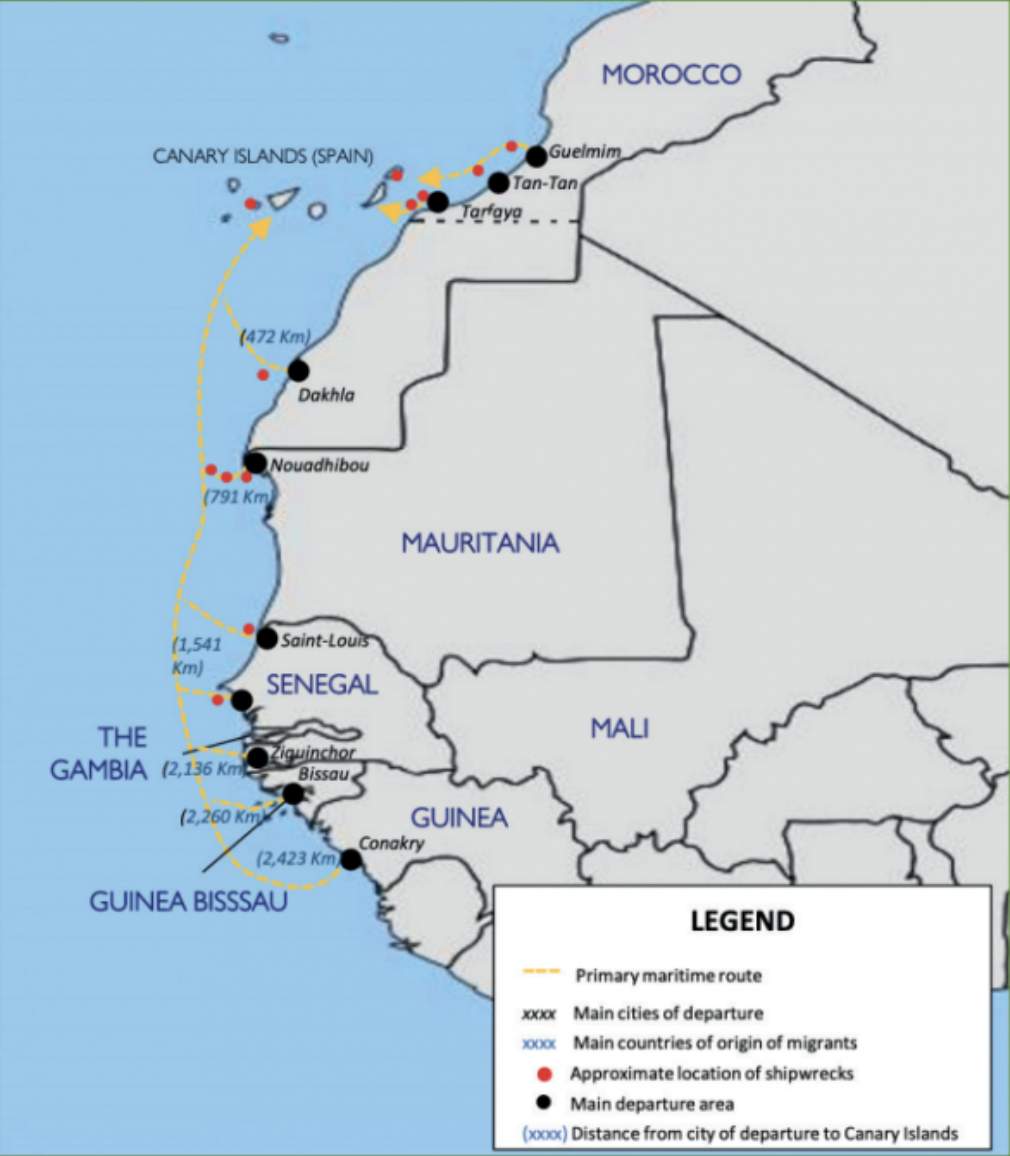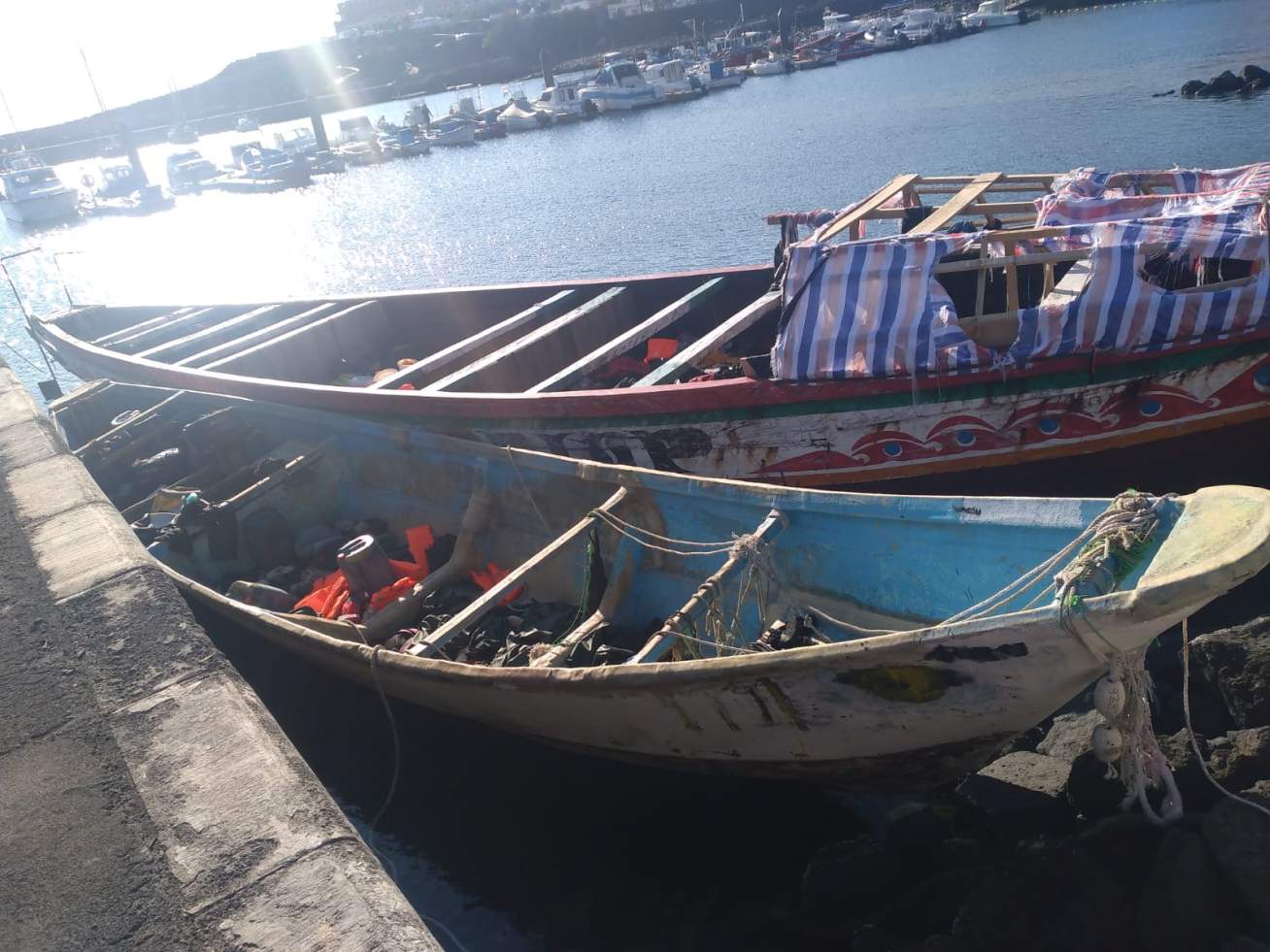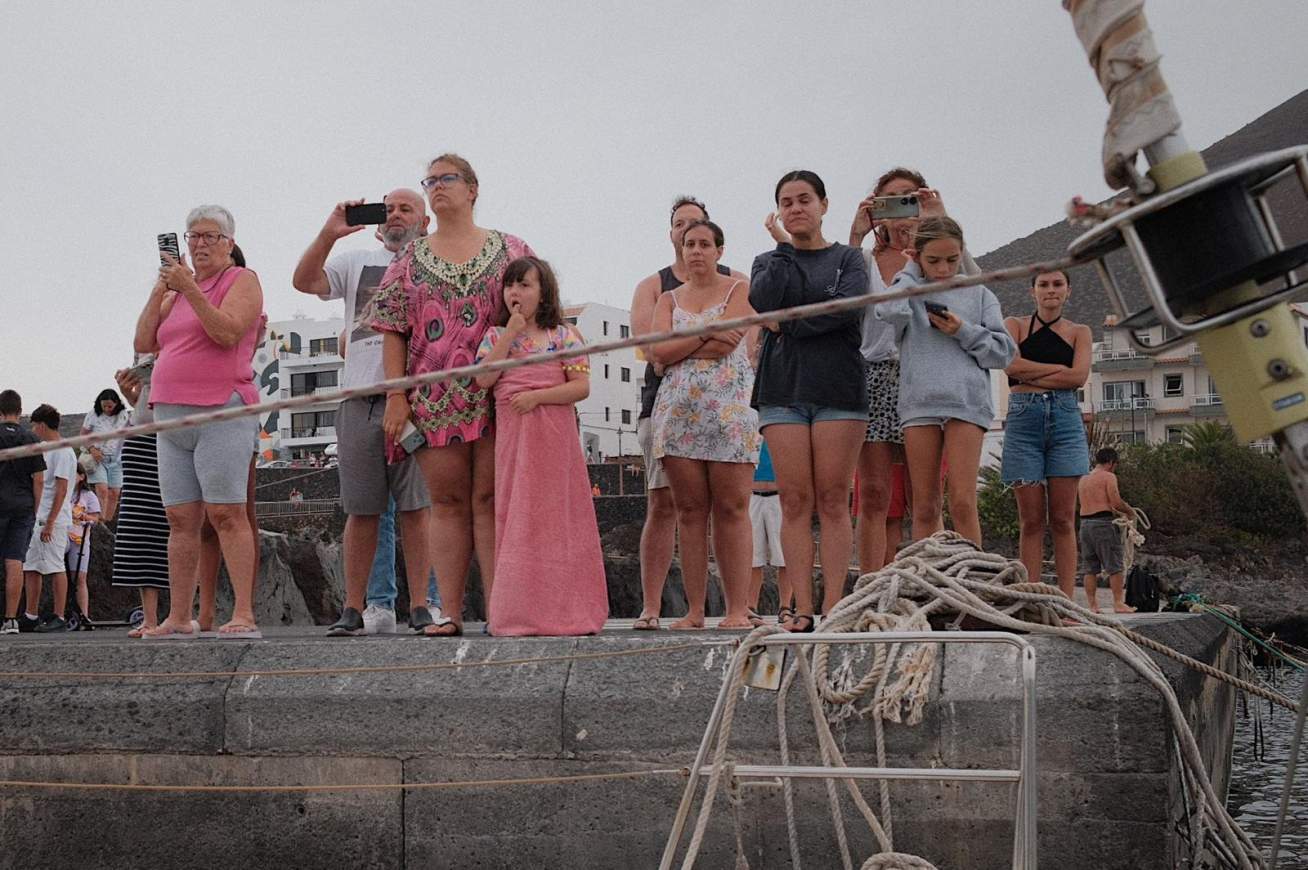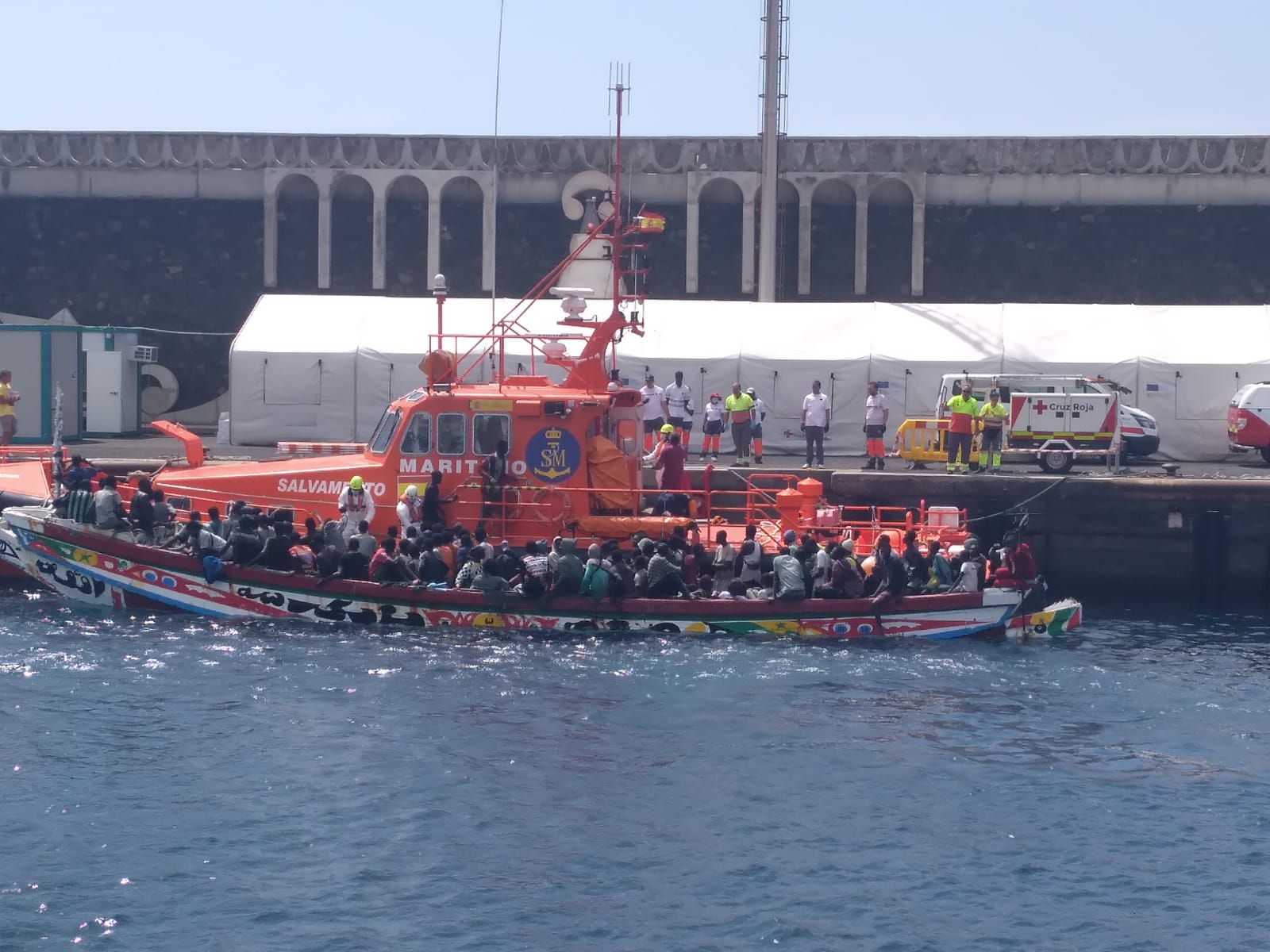
Read our Digital & Print Editions
And support our mission to provide fearless stories about and outside the media system
“We were told the Atlantic ocean would be at its calmest by late August but I’ve never experienced anything like it before”, Kevin Omar, an 18-year-old from Gambia, told Byline Times.
In the summer of 2023, he boarded a crowded migrant boat on an 800km journey from Senegal in West Africa to Spain’s Canary Islands — a deadly route thousands of other people have taken in the last year.
“There were 120 of us onboard for six days, with no room to move. I kept thinking that at any moment we would all die – that the waves would just snap the boat in half or capsize us,” he said, recalling how the passengers had no food during the last three days, and no water for two.
“By the end, we were so desperate that people were even thinking of drinking seawater. When we finally saw the island on the seventh day you can’t imagine how we celebrated. I prayed as we came into the harbour,” Omar said.
A year later, Omar is working as a volunteer translator at the same migrant reception centre where he spent his first night in Spain. It is on the small, volcanic island of El Hierro – the epicentre of the Canaries’ current surge in irregular migration.
Located 120km west of Tenerife, El Hierro has received 13,000 irregular migrants this year – 2,000 more than its number of permanent residents. During one weekend in February 2023, more than a thousand arrived.
“More than 450 people arrived today alone, nearly all in good health”, explains Omar. “It is not always like that.”
You see people with terrible muscle problems. Others are covered with open sores, their skin destroyed by the sun or infection after ten, twelve, even fifteen days on the ocean
Kevin Omar
Francis Mendoza, the coordinator of the local volunteer group where Omar works, remembers one case in particular of this type of agonising skin infection from November 2023, when a young man from Mali “arrived at the centre in a very bad way”.
His legs, feet and genitals were covered in sores – caused by having to sit for days in seawater contaminated with human waste and engine fuel that had collected at the bottom of the boat.
“He was quickly brought to the hospital. After two days he called his uncle with whom he had travelled and seemed to be doing a lot better”, Mendoza continued. “You should have seen how his uncle was smiling after talking to him. It gave us all a lift during a very intense period.”
The next morning the phone rang, Mendoza recalls: “His condition had taken a turn and the young man had died overnight. I then had to give his uncle the news. It was heartbreaking.”
Such deaths are all too common along the arduous, long-distance Atlantic route, where boats depart from across a 600km stretch of the west African coast to the popular Spanish holiday islands. Most of the boats currently arriving to El Hierro are departing from Mauritania and northern Senegal while others reaching islands such as Lanzarote set off from southern Morocco and the Western Sahara.

According to figures from the Spanish NGO Caminando Fronteras, the route is the most deadly migrant crossing in the world — with the number of dead and disappeared totalling 4,808 people in the first five months of 2024.
“The vast majority of victims disappear at sea without a trace”, explains Mendoza. “Boats have also washed up in places like Costa Rica or the Dominican Republic having drifted for months across the Atlantic with no one onboard left alive.”
In the latest tragedy, during the early hours of 28 September, a migrant boat carrying 84 people capsized close to El Hierro’s coast as the Spanish coastguard attempted a rescue in strong winds. Nine bodies were recovered, including that of a child aged between 12 and 15; 48 others remain missing.
“The public reaction has been one of consternation”, says Juan Carlos Lorenzo, the Canaries coordinator for the Spanish Refugee Aid Commission.
“In such conditions rescue operations are always challenging. It is a tragedy — the single worst loss of life along the coastline of the Canary Islands in thirty years and once again highlights the lethal reality of Europe’s borders.”
Changing Migration Flows
Despite such risks, increasing numbers have braved the Atlantic over the last year. A record 31,000 undocumented migrants arrived in the Canaries between January and September, an increase of 113% compared to the same period in 2023.
A key factor driving this surge is the worsening armed conflict in Mali, which has seen at least 200,000 refugees displaced to neighbouring Mauritania. On the back of this, Malians have become the largest national group among those arriving to the archipelago by sea for the first time, overtaking Senegalese and Moroccans.

Radio Televisión Canaria journalist Haridian Marichal notes that “tighter border controls along the central and western Mediterranean are a further factor contributing to the current surge”.
Refugees and migrants fleeing West Africa to Europe have traditionally followed two major routes: one north overland to Tunisia and Libya, to reach Italy and the other via the Atlantic coast to the Canaries.
Yet arrivals to Italy have fallen 63% this year, as Tunisia launched a brutal crackdown against irregular migration in the wake of its EU strategic partnership agreement last summer, which has caught the attention of British Prime Minister Keir Starmer.
A recent investigation by The Guardian detailed the widespread use of rape and beatings by the Tunisian police against migrants as part of this EU-funded campaign.
According to Lorenzo, “It is not only on human rights grounds that such repressive policies should be rejected but also because they don’t actually achieve sustainable reductions”.
“Outsourcing border controls to third-party states like Tunisia might provisionally contain migrant flows along certain routes but this is achieved by pushing people towards alternative points along the EU’s southern border”, he argues. “In this case, it has contributed to the huge migratory pressures on Mauritania.”
As El País has investigated, Mauritania employs many of the same brutal deterrents against migrants as used in other EU partner states, such as arbitrary detention, physical violence and enforced displacement. But the sparsely populated state with a 800km long coast is not in a position to reproduce a sustained, comprehensive strategy of containment.
In February, Spain’s centre-left prime minister Pedro Sánchez and the European Commission president Ursula von der Leyen visited the Mauritanian capital, Nuakchot, to finalise a €200 million package to help the country curb onward migration to the Canaries. “Numbers did fall in the immediate aftermath of the visit”, Lorenzo notes, before adding: “But that only lasted a matter of months.”
Marichal explains that “it is now even becoming more common for people to arrive via Mauritania from as far afield as Pakistan, Syria and Yemen”.
Amongst this latter cohort is Soufian, who arrived at El Hierro in late August, more than a year after leaving his home in Pakistan. Outside Los Raíces migrant camp on the neighbouring island of Tenerife, the 34-year-old explains he had travelled overland via Iran, Turkey and then to North Africa where he had initially hoped to reach Italy.
“It was not possible to cross [the Mediterranean] so I had to continue from country to country”, he recounts. “I took the boat from Mauritania only a few weeks ago, which was extremely hard. We were out there for seven days. Now I hope to work and send money back for my son’s education.”
Politicising Migration – and Finding Space at the Cemetery
Meanwhile, as images of migrant boats arriving in El Hierro led news bulletins over the summer, the Spanish right went on the offensive.
Leader of the far-right Vox Santiago Abascal denounced what he characterised as the “mass-scale invasion” of El Hierro by “illegal migrants” while conservative media outlets dubbed it “the Lampedusa of the Atlantic”, in reference to the Italian migration hotspot where a state of emergency was declared last year.
“The far-right want to turn El Hierro into a symbol of division but they won’t succeed,” insists Amado Carballo, head of social affairs in the island’s local administration. Yet he acknowledges a degree of exhaustion among the locals.
“The current surge has been going on for a year now”, he says. “Public services on the island have been left under huge pressure. We now need more long-term planning from national authorities.”
Marichal agrees. “El Hierro is an island with infrastructure and services for 11,000 people. We only have one hospital with 32 beds. Everyone – the European Commission, government ministers and party political leaders – have visited the island but we are still left with insufficient resources.
“Despite some of the political rhetoric, we have avoided images of collapse but too often the state has simply fallen back on local volunteers to plug the gaps.”
The Socialist Party mayor of El Pinar, Juan Miguel Padrón, gives a grim example of the extra financial pressures facing his local council — the need for an extension to the municipal graveyard due to the number of extra bodies that are now being buried there.
We are committed to ensuring those who die reaching El Hierro get a dignified burial, the same as any of our neighbours would have. But we also need support to finance this previously unplanned for capital project
Juan Miguel Padrón, mayor of El Pinar
To avoid further pressure on El Pinar’s cemetery, the nine bodies recovered from last weekend’s tragedy were buried in the island’s other two graveyards.
Yet probably the most acute crisis arising from the surge is that facing the Canaries’ system of care for unaccompanied migrant children – which has reached breaking point in recent months.
The regional administration is currently responsible for close to 5,300 migrant children, 2,000 above its capacity. This has led to massive overcrowding and makeshift solutions, with some minors presently living in warehouses once used to breed pigeons.

“In refusing to take in some of these children, and to share the burden, other Spanish regions have shown a complete lack of solidarity with the Canaries,” Carballo asserts.
Only 39 migrant children have been transferred to mainland Spain this year while opposition parties blocked a legal change in July that would have allowed for a compulsory redistribution of minors across the state.
In July, Vox chose to take a stand, pulling out of five regional coalition governments over an agreement to transfer just 347 unaccompanied minors from the Canaries – justifying this by linking migrant children to increased crime and insecurity.

“We need to be careful with our language,” Marichal insists. “We are talking about children who have undergone traumatic journeys, some have even lost their parents along the way. Protecting their rights and dignity needs to be something automatic.”
Changing Attitudes and Different Realities
The constant political and media focus on immigration in recent months has had a clear impact on public opinion.
According to polling from the state-run Centre for Sociological Investigation in July, the Spanish public rated immigration as only the ninth most pressing problem facing the country. By September, it topped the list for the first time.
“Three months of cheap populism, hate speech and disinformation campaigns… [have made] a reasonable discussion on immigration impossible” tweeted David Jimenez, ex-editor of El Mundo.

Back in El Hierro, the daily arrival of wooden cayuco migrant boats to the picturesque La Restinga harbour has created a sense of duality in the town.
On the first weekend in September, sunbathers and families along the beach exchange waves and greetings with those on the migrant boat being towed to the pier while people sitting out at seafront bars look on with interest.
“I was having a drink when the boat came in”, says Montserrat Peris, a Catalan tourist told Byline Times. “The lads on board were shouting “te quiero” [I love you], so obviously relieved.”
Abdoulaye is on the other end of this meeting of two worlds. Having arrived at El Hierro the night before, the young man from Senegal asks to borrow my phone on the ferry to Tenerife where he is being transferred to Los Raices camp with the others from his cayuco.
“Mum, I made it to the Canary Islands ok. I am well”, he says in a WhatsApp voice message.
Thousands of other families have been left waiting for such news of their loved ones’ arrival this year, never hearing from them again.
ENJOYING THIS ARTICLE? HELP US TO PRODUCE MORE
Receive the monthly Byline Times newspaper and help to support fearless, independent journalism that breaks stories, shapes the agenda and holds power to account.
We’re not funded by a billionaire oligarch or an offshore hedge-fund. We rely on our readers to fund our journalism. If you like what we do, please subscribe.
